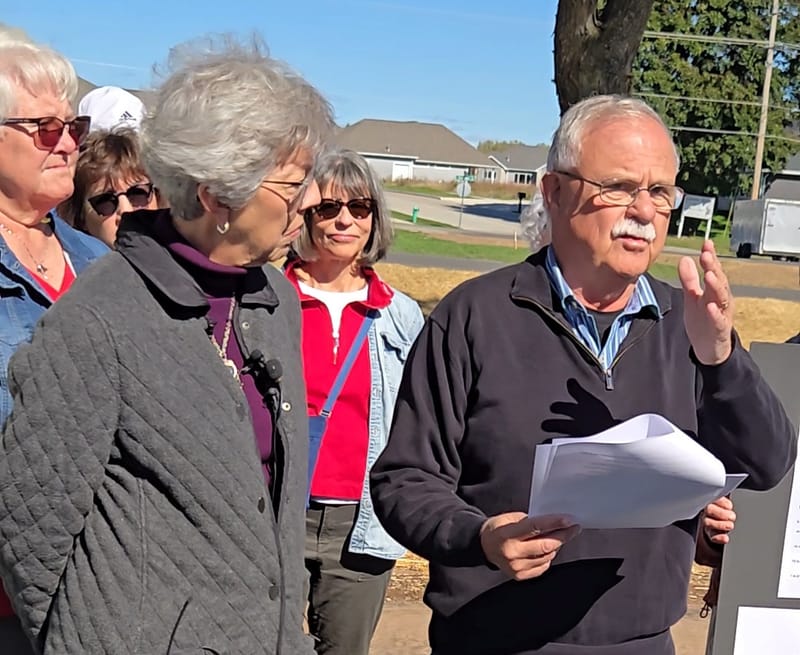Child care industry mostly sour on results from state budget
When the funding ends, the industry will be right back in the position it was in: providing a critical but expensive need for families, kids and employers and doing so on low margins and with an underpaid, overworked staff

- Wisconsin included $66 million for child care in the 2025-27 state budget — the first time the state has funded child care directly.
- Many in the industry see it as too little, too temporary, and attached to harmful policy changes.
- It replaces expiring COVID-era stabilization funds but offers less support overall.
Deprive someone of something long enough and they become grateful for any scrap you might toss their way. Soon enough, though, that gratitude turns to resentment.
That seems to be the general attitude of the child care industry after Wisconsin for the first time ever ponied up state dollars to support providers. Negotiations in the 2025-27 state budget ultimately yielded a total of $330 million (mostly federal dollars) for an industry that desperately needed a lifeline, though all agree that the line reaches only so far and leaves child care in Wisconsin still on life support. Only $66 million of that total is state funds.
“It kicks the can down the road,” said Corrine Hendrickson, owner of Corrine’s Little Explorers Learning Center in New Glarus and one of the founders of Wisconsin Early Childhood Action Needed (WECAN). “It’s actually less than what we were getting (from the expiring Covid-relief child care stabilization subsidies). And then there's a finite ending. A lot of it is actually the interest money that our state has earned on the federal American Rescue Plan (ARPA) funding. And so it's not even really state money and it's not renewable.
The money also comes with strings attached, specifically demands for changes in several child care practices that experts warn are harmful to kids and place a greater burden on an already overstrained industry. Those include greater child-to-teacher ratios, the lowering of the minimum age for teachers to 16 and a new initiative called the ‘Get Kids Ready Initiative’ that could become a financial drain on centers.
Of that $330 million, $110 million (ARPA interest money that expires next June) is direct payments to child care providers; $123 million is subsidies for parents; $28.6 million for federally funded subsidy bonuses to providers who agree to a new "pilot program" for infants and toddlers; and $66 million – the only actual state dollars – goes to fund the ‘Get Kids Ready Initiative,’ which is designed to improve four-year-old classroom readiness.
The family subsidies portion is also federal dollars and comes from the Child Care Developmental Block Grant and Temporary Assistance for Needy Families. But the maximum amount per family will not increase until the next budget, meaning that as rates increase, affordability will decrease.
“I’m sort of in the middle on this,” said Julie Stoffel of Cradle to Crayons Learning Center in Kimberly. “It’s hard not to ignore that this is historic that the state is giving us money and in this political climate. I know it's not ideal, but we got another year of these bridge payments to at least sustain where we're at so that hopefully we can, you know, not have to increase rates drastically. And to keep our staff where they are so we're not losing staff.
“But it’s almost like you get so little that you have to accept the bad along with whatever you do get.”
WECA issues warning about higher ratios
By next June, when the funding ends, the industry will be right back in the position it was in: providing a critical need for families, kids and employers and doing it on exceedingly low margins with underpaid and overworked staff for parents who can often barely afford the cost if they can find an available slot. Wisconsin is considered a child care desert, defined as one child care slot for every three children seeking one.
Both Hendrickson and Stoffel are equal parts baffled and miffed that GOP legislators exacted as a price for the temporary funding fairly drastic changes in child care practices, despite having no expertise in the field. The biggest demand comes via the $28.6 million pilot program for toddlers and infants that offers subsidy bonuses for providers who agree to an increase in child-to-teacher ratios from 4-to-1 to 7-to-1, something the Wisconsin Early Childhood Association’s Center for Policy Research and Engagement (WECA) says leads to everything from greater safety and supervision risks to higher stress and burnout for staff, among other things.
“Yeah and with the ratios we already have, the burnout is already highest in those rooms,” said Hendrickson, who pointed out that at $13.66 an hour, child care teachers rank 543rd out of 556 occupations. “And the turnover is highest in those rooms and those kids need the most consistency. And so it feels like we’re being bribed to take more kids and so to me the tradeoff isn’t worth it. And so these press releases are saying this will help improve accessibility and affordability for parents and it’s not. That's flat out not happening because we're getting less funding, so we're going to have to increase prices. We're not going to be able to hire more teachers. We're not going to be able to open up classrooms.”
The lowering of the age requirement for assistant teachers to 16 is another concern for WECA, which again cites safety issues and a lack of preparedness for managing “group dynamics, emergencies and behavioral challenges.” Few states allow 16-year-olds to work in child care centers.
“It’s unusual to see this much policy tied to funding,” Stoffel pointed out. “And then I noticed they have money going for things like child care finders or whatever. And that was disappointing because, how’s that going to help? Put the money into child care. There aren’t enough slots as it is, let’s face it.”
Bandaids instead of tourniquets
Hendrickson is pushing for Wisconsin to adopt the Vermont plan that uses a .44 payroll tax to help fund child care. The results have been promising: The payments to child care programs are about double what they were, which has increased available slots by a thousand and programs by about 100 – many of those in the even more desperate rural areas – while the costs to parents have gone down. Small businesses were big proponents of the program because they benefit greatly from available child care.
Until that happens though, Stoffel and Hendrickson are hoping that the 2026 elections bring into power people who understand how critical child care is and are willing to provide the necessary funding. Democrats offered $480 million in April that was rejected by GOP legislators, who in the past have offered tax credits to families in lieu of direct funding of the industry.
“Simply put, the 2025-2027 biennial state budget failed children overall,” said Rep. Lee Snodgras, a Democrat from Appleton. “Whether it be failing to meet funding needs for public schools or the child care industry, this budget offered only bandaids when we needed tourniquets. That $110 million does not cover the needs formerly covered by Child Care Counts (the name of the ARPA-funded child stabilization fund in the state).
"These funds will expire in June 2026 putting providers right back in the situation they are currently in – raising tuition for families or reducing pay or benefits for their staff. That would further lead to folks leaving the field and providers without the staff needed to keep their doors open.”
For Hendrickson, who, in conjunction with WECAN, Wisconsin Public Education Network and Main Street Alliance, will help spearhead a “Time’s Up” rally in support of child care in Madison starting at 9 on July 11, time really is running out.
“No, I actually have lost three children already in the last three months because of having to raise my rates,” she said. “And then I'm going to still have to increase my rates by thirty bucks a week. So I have not had anybody calling that is not pregnant or has an infant, and so I am likely closing.”






